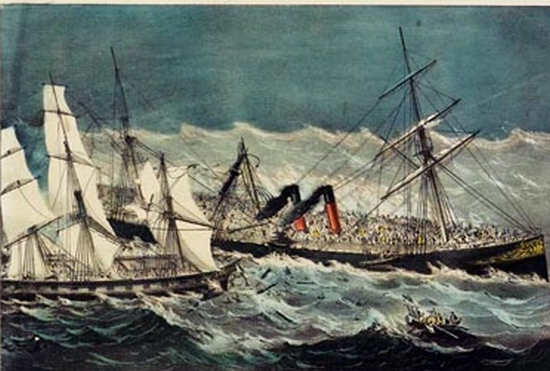It Is Well With My Soul is among the most popular hymns worldwide.
Sometimes life can be challenging. And without hope and encouragement, most people can find it difficult to overcome challenges, heartbreaks, and loss. That said, the powerful lyrics in It Is Well With My Soul evoke memories and emotions, bringing a strange kind of sadness that uplifts people.
And you don’t have to be a Christian to appreciate the story behind the hymn It Is Well With My Soul. It is an inspiring story of loss, perseverance, hope, and acceptance.
What Is the story behind ‘It Is Well With My Soul’?
Horatio Spafford (1828-1888) had a perfect life. He was a successful lawyer and investor in Chicago with a lovely family — his wife and five children. He was also a philanthropist who dedicated his life to serving the church.
But in 1871, Spafford and his wife Anna lost their 4-year-old son to scarlet fever. Then, a few months later, he lost much of his real estate investment in the Great Chicago Fire.
These losses brought immense grief and stress to his family, and he thought a vacation would reduce this sadness. So in 1873, he planned a family vacation to England, but he couldn’t board the ship with them because he had other pressing business matters. So instead, he planned to join his family in Europe after finishing his business in Chicago.
On November 22, 1873, his wife and daughters boarded the French ocean liner Ville du Havre, which was struck by a British iron sailing ship Lockhearn in the Atlantic Ocean. Out of 313 people on board, about 200 lost their lives, including Spafford’s four remaining daughters.
However, Anna survived. A sailor saved her with a small boat when he found her floating in the wreckage. She was later picked up by a larger vessel that took them to Cardiff. She sent Spafford a telegram from England that said: “Saved alone, what shall I do?”

What Is the meaning of ‘It Is Well With My Soul’?
After receiving the telegram, Spafford immediately boarded a ship to join his grieving wife. The captain was aware of the tragedy that had struck Spafford. So when they came to the point of the collision, the captain called Spafford to his cabin to tell him they were at the spot where Ville du Havre went down.
According to Bertha Spafford, a daughter who was born after the accident, her father penned the hymn while crossing the ocean that had claimed his remaining children. They were words of perseverance, hope, and comfort when he remembered his daughters.
When peace like a river, attendeth my soul,
When sorrows like sea billows roll,
Whatever my lot, Thou has taught me to say,
It is well; it is well with my soul.
When he returned to Chicago, his friends came to console him. Among them was a famous composer and vocalist, Philip Bliss. The prose touched Bliss, so he composed a peaceful melody to accompany the words to It Is Well With My Soul. Together with Spafford, Bliss published the song in 1876.

Life after loss
So what happened to the man who inspired the hymn? Spafford and Anna had three more children, but one died of pneumonia at the age of four. In 1881, the family moved to Jerusalem, where Spafford was killed in 1888.
Still, his timeless hymn inspires comfort and gratitude in the face of tragedy. And 140+ years later, the lyrics remain unchanged.
Please listen to the hymn here:
Words that foster hope, endurance, and gratitude
It’s fascinating that Spafford wrote the hymn in times of tragedy and inconceivable sorrow. And whether you are religious or not, his motivational story inspires hope, perseverance, and comfort. You learn that even when things go wrong, you can always hope for a better future; tomorrow will be well.
Follow us on Twitter, Facebook, or Pinterest

